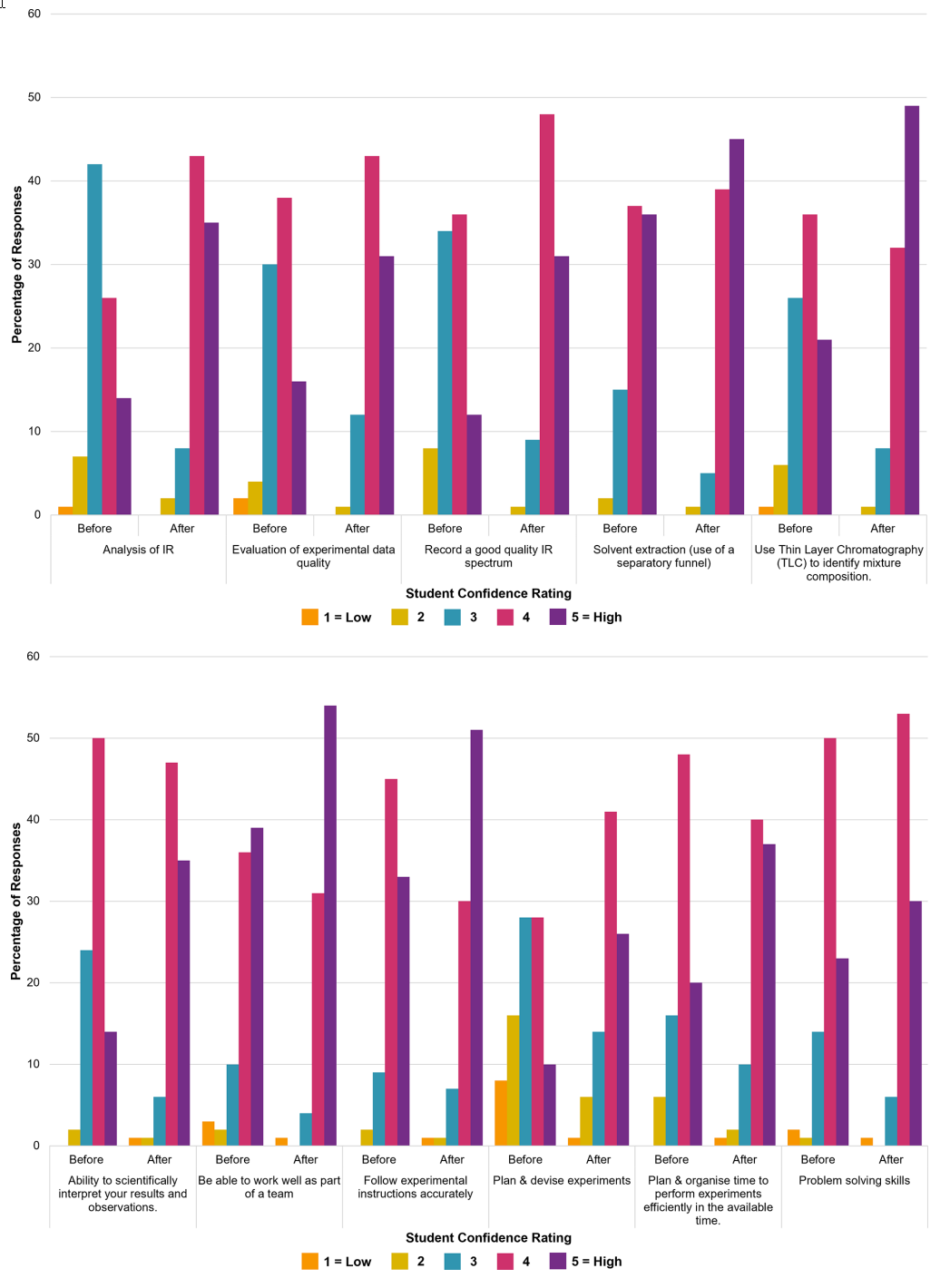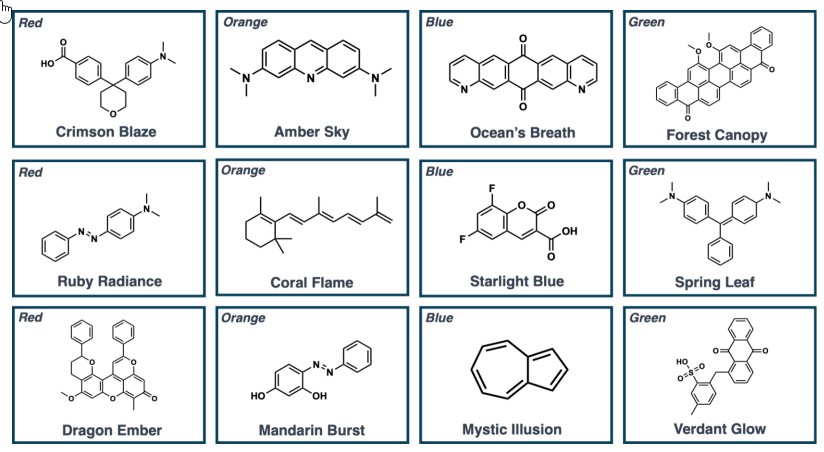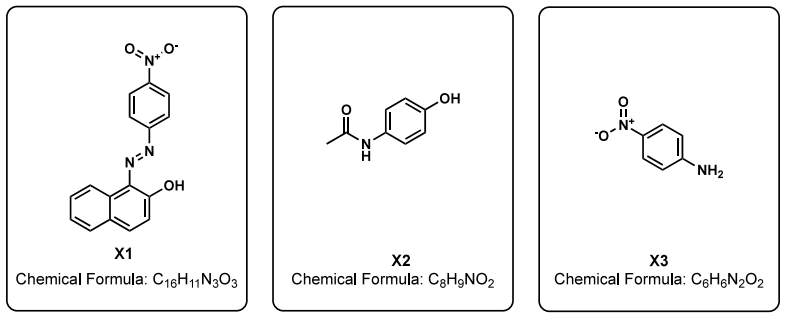Educators are increasingly seeking innovative approaches to make learning more interactive and effective. One such approach is game-based learning, an active pedagogical method where learning is facilitated through the use of games. This field is diverse, but games typically share elements of competition, challenge, interaction, and teamwork.
Among the various game types explored in chemistry education, including card games, board games, digital games, and role-playing games, escape rooms have emerged as a rapidly growing phenomenon offering a unique and engaging learning experience.
In an escape room, participants are placed in a themed environment and must solve a series of tasks or challenges, often with minimal direct instruction, to 'escape'. This inherently promotes problem-solving, teamwork, and critical thinking, providing a stimulating platform for consolidating scientific concepts, fostering collaboration, and developing a growth mindset.
This paper presents the development and evaluation of "da Vinci's Curse," a chemistry escape room designed specifically to consolidate laboratory skills for undergraduate students in a fun and interactive setting. Inspired by Leonardo da Vinci, the escape room challenges students working in teams to solve puzzles and escape a "cursed" secret laboratory in Florence, Italy.
Key Takeaways
- "da Vinci's Curse" is a chemistry escape room designed to help first-year undergraduate students consolidate practical laboratory and transferable skills through game-based learning.
- The escape room is themed around escaping a secret laboratory belonging to Leonardo da Vinci in Florence, Italy, adding an element of anticipation and immersion.
- The puzzles focus on core laboratory techniques, including liquid-liquid extraction, acid-base behavior of functional groups, infrared (IR) spectroscopy, and thin-layer chromatography.
- Evaluation using Likert-style surveys before and after the activity showed a statistically significant increase in student confidence in a range of key laboratory, transferable, and employability skills. Specifically, confidence increased significantly in skills like thin-layer chromatography, recording and analyzing infrared spectra, and planning and devising experiments.
- Students overwhelmingly enjoyed the escape room experience (94% positive response) and enjoyed working in teams (94% positive response).
- Qualitative feedback highlighted teamwork, problem-solving, the fun theme, skills consolidation, and a less pressured environment as enjoyable aspects.
- The activity encourages collaboration and allows students to practice skills without a rigid, "recipe-style" approach, mirroring real-life chemistry problems.
- Transferable skills such as teamwork, problem-solving, leadership, and critical thinking are developed during the activity.

Overview
"da Vinci's Curse" is a chemistry escape room developed and implemented as a formative assessment element within the Year 1 undergraduate chemistry curriculum at the University of Nottingham, UK. It was integrated into both MSci and BSc chemistry courses. The activity was designed to run with approximately 60 students per session, allowing large cohorts to participate.
The escape room experience is preceded by a one-hour introductory session that builds the scenario and provides logistical information. Students are reminded of previous experiments and encouraged to reflect on their skills development.
Students are told they have discovered a secret laboratory beneath Florence, Italy, filled with samples and writings believed to belong to Leonardo da Vinci. After collecting samples, they find themselves locked in, with a voice stating they must solve three puzzles to escape "da Vinci's Curse".
Students are organized into small teams of 5-7, typically based on existing small-group teaching allocations, and given Italian city names to maintain the theme. The escape room itself is designed to fit within a four-hour laboratory session.
Gamemasters, usually academic or postgraduate demonstrators, oversee the teams. Their role is to receive puzzle answers and guide teams to the next challenge, provide safety guidance, and offer hints if teams are struggling. However, the primary source of guidance for students comes from instructional riddles provided by "da Vinci" himself.
The puzzles are designed to consolidate specific practical laboratory techniques students have encountered during the year. These include liquid-liquid extraction, understanding the acid-base behavior of functional groups, interpreting infrared spectroscopy, and performing thin-layer chromatography.
The activity requires students to apply their knowledge and skills to unfamiliar tasks in a semi-structured environment, where solutions are not immediately obvious or provided through a simple "recipe".
Why it’s Important
The "da Vinci's Curse" escape room represents an important application of game-based learning to enhance science education. It addresses the need for innovative methods that go beyond traditional lectures and structured laboratory exercises, which may not always fully engage students or promote deeper learning.
Escape rooms, by their nature, require active participation, problem-solving, critical thinking, and collaboration, skills essential for both academic success and future careers.
Undergraduate laboratory teaching should focus not only on chemistry-specific practical skills but also on developing transferable skills to improve employability. There is increasing recognition from students, employers, and professional bodies that developing a wide range of skills is a key outcome of an undergraduate curriculum.
Activities like "da Vinci's Curse" allow students to reflect on their overall skills development, rather than viewing skill development as compartmentalized within individual experiments.
The escape room format provides a "less pressured" environment compared to typical laboratory work, where students might feel compelled to complete experiments perfectly on the first attempt. This format encourages experimentation, creative problem-solving, and peer collaboration, fostering a growth mindset.
By framing complex tasks within an engaging narrative and providing guidance through riddles rather than explicit instructions, the escape room encourages students to work independently and rely on teamwork, mirroring the ambiguity often faced in real-world scientific problems.
The use of themes like the da Vinci laboratory setting helps create anticipation and a more immersive environment, contributing to increased student engagement. This approach demonstrates how educational activities can be both effective for skills consolidation and enjoyable, contributing to a positive learning experience.
The positive student feedback on teamwork, problem-solving, and the fun theming highlights the value of this approach in making laboratory learning more engaging and less daunting.
Summary of Results
The effectiveness of "da Vinci's Curse" was evaluated using a Likert methodology, comparing student confidence in a series of practical and transferable skills before and after participating in the escape room.
A total of 157 students participated over two years (76 in 2023, 81 in 2024). For the confidence analysis, 90 students completed both the pre- and post-activity surveys, allowing for a matched-pair analysis using the Wilcoxon signed-rank test to determine the statistical significance of changes in confidence.
The skills assessed were based on standards from the Royal Society of Chemistry and an inventory of laboratory skills developed by UK higher education institutes.

Figure 11. Interactive chart on change in student confidence in scientific and transferrable skills.
Out of 21 skills surveyed, 17 showed a statistically significant improvement in student confidence after the activity. While students already reported some level of skill acquisition before the escape room, none of the skills had more than a 40% "Very High" confidence rating in the pre-survey.
Following the activity, there was a clear trend of increased confidence across the key skills highlighted in Figure 11. Significant improvement was specifically observed in confidence related to thin-layer chromatography, recording and analyzing infrared spectra, and planning and devising experiments.
Four skills showed no statistically significant change in confidence: "Use of reflux apparatus," "Recrystallization," "Use significant figures properly," and "Use units properly". These skills were noted as not being required for successful completion of the "da Vinci's Curse" puzzles, making the lack of observed change in confidence expected.
Interestingly, there was a statistically significant decrease in student confidence for vacuum filtration, a skill not used in the escape room. The sources suggest this decrease might be due to students reflecting on their development in skills practiced during the activity and subsequently realizing they may have overestimated their initial confidence in vacuum filtration.
While skills such as leadership and critical thinking were likely developed during the activity, they were not included in the surveys as they are considered advanced cognitive abilities that first-year students might struggle to reflect on effectively.
Qualitative feedback was also collected through free-text responses. A large majority of students (94%) reported enjoying the escape room. The primary reasons for enjoyment, based on the themes emerging from 115 responses, included:
- Teamwork (33%). Students appreciated working as part of a team.
- Problem Solving (32%). Students enjoyed the challenges and figuring out tasks without a detailed manual.
- Fun theming (29%). The thematic aspect made the laboratory experience more engaging.
- Consolidation (18%). Students found it beneficial to apply skills learned throughout the year to a new context.
- Less Pressure (8%). The activity felt different and more relaxed compared to typical labs.
The "Less Pressure" comments suggest that the more open-ended problem-solving approach was perceived differently than following rigid experimental steps. The positive response to the fun theme also contributed to a less pressured environment. A high percentage of students also enjoyed working in a team (94%) and would recommend the activity (89%).
Gamemaster observations provided further insights into team behavior. Teams approached puzzles differently; some were eager to experiment, while others preferred consulting provided information first.
Puzzle 1, which involved liquid-liquid extraction and acid-base behavior, was noted as potentially the most challenging due to its unfamiliar format, lack of detailed guidance, and multiple possible approaches.


Figure 2 shows the riddle for Puzzle 1, Figure 3 depicts the dye structures provided to students, and Figure 4 illustrates the schematic for separating the da Vinci dye mixture. The "da Vinci dye" is a mixture of three actual dyes (Direct Red 81, Sudan Orange G, and Solvent Blue 59) that were given fictional names and structures in the student materials to simplify their acid-base behavior for a Year 1 undergraduate level.
As teams became more comfortable working without direct instructions, leadership, peer learning, and creativity emerged naturally. Gamemasters supported these dynamics and noted that all teams remained engaged and successfully completed the escape room within 2.5 to 3.5 hours.
Safety was prioritized over speed, with no rewards for finishing quickly. Gamemasters also appreciated the thematic props used, reinforcing the importance of scenario building.


Figure 9 shows an example information sheet provided to students. Figure 10 shows a commemorative key given upon escape, containing a secret message decipherable using atomic numbers.
The supporting information for the article includes Gamemaster notes, student assessment materials, technician notes, evaluation questions, details on scenario building and gameplay elements, and the Likert and Wilcoxon signed-rank data.
Conclusion
"da Vinci's Curse" has been shown to be an effective and engaging educational activity for consolidating key practical and transferable skills among undergraduate chemistry students. The escape room format successfully leverages game-based learning principles to create an interactive environment where students can apply their knowledge in a novel, problem-solving context.
The evaluation results demonstrate that participating in the escape room led to a significant increase in student confidence across several important laboratory skills and broader transferable skills. The positive feedback from students highlights the value of this approach in making learning enjoyable, promoting teamwork and collaboration, and providing a less stressful alternative to traditional assessments.
By requiring students to solve puzzles related to techniques like liquid-liquid extraction, spectroscopy, and chromatography through riddles and exploration rather than explicit instructions, "da Vinci's Curse" encourages independent thinking and adaptation, crucial skills for future chemists. The game also effectively integrates safety practices, with appropriate precautions in place for handling chemicals.
The success of "da Vinci's Curse" supports the growing trend of using escape rooms and other game-based learning methods in chemistry education. Student suggestions, such as incorporating additional experimental techniques like reflux, indicate areas for future development to further enhance the scope of skills consolidated through this engaging pedagogical tool. Overall, this research provides compelling evidence for the benefits of using well-designed educational escape rooms to improve both student skills and their learning experience.

Can You Escape da Vinci’s Curse? A Chemistry Escape Room for Skills Consolidation
Can You Escape da Vinci’s Curse? A Chemistry Escape Room for Skills Consolidation